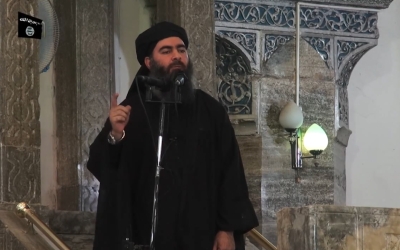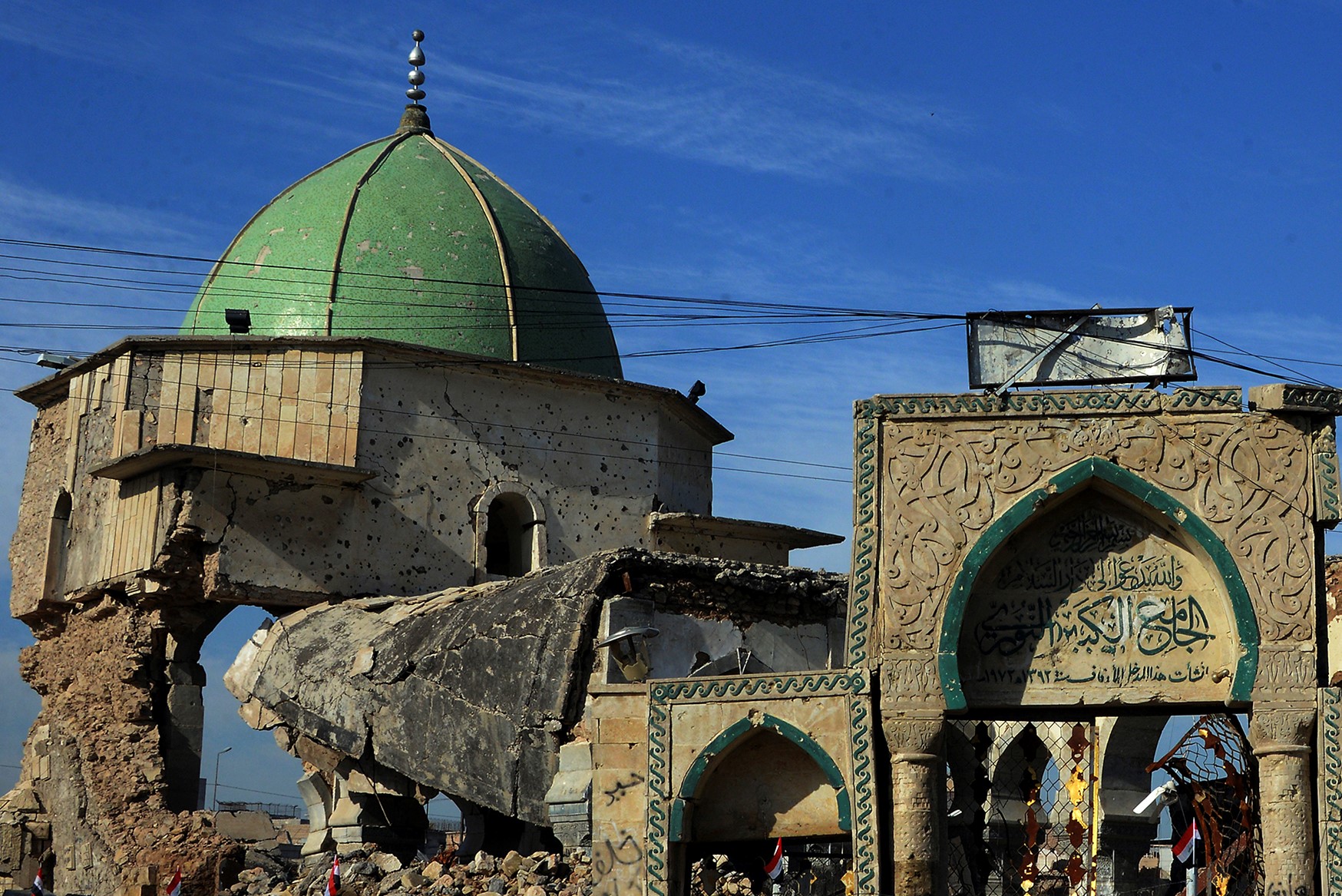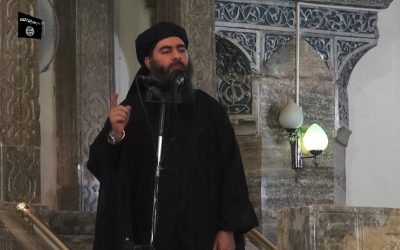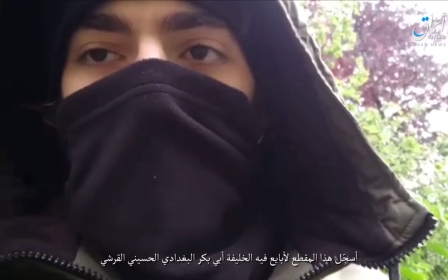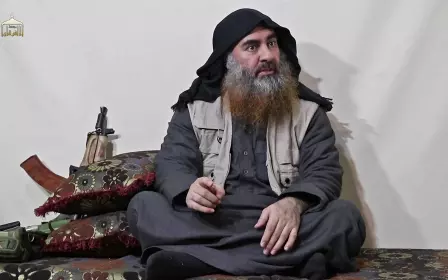Baghdadi's death: Islamic State will survive as long as chaos reigns
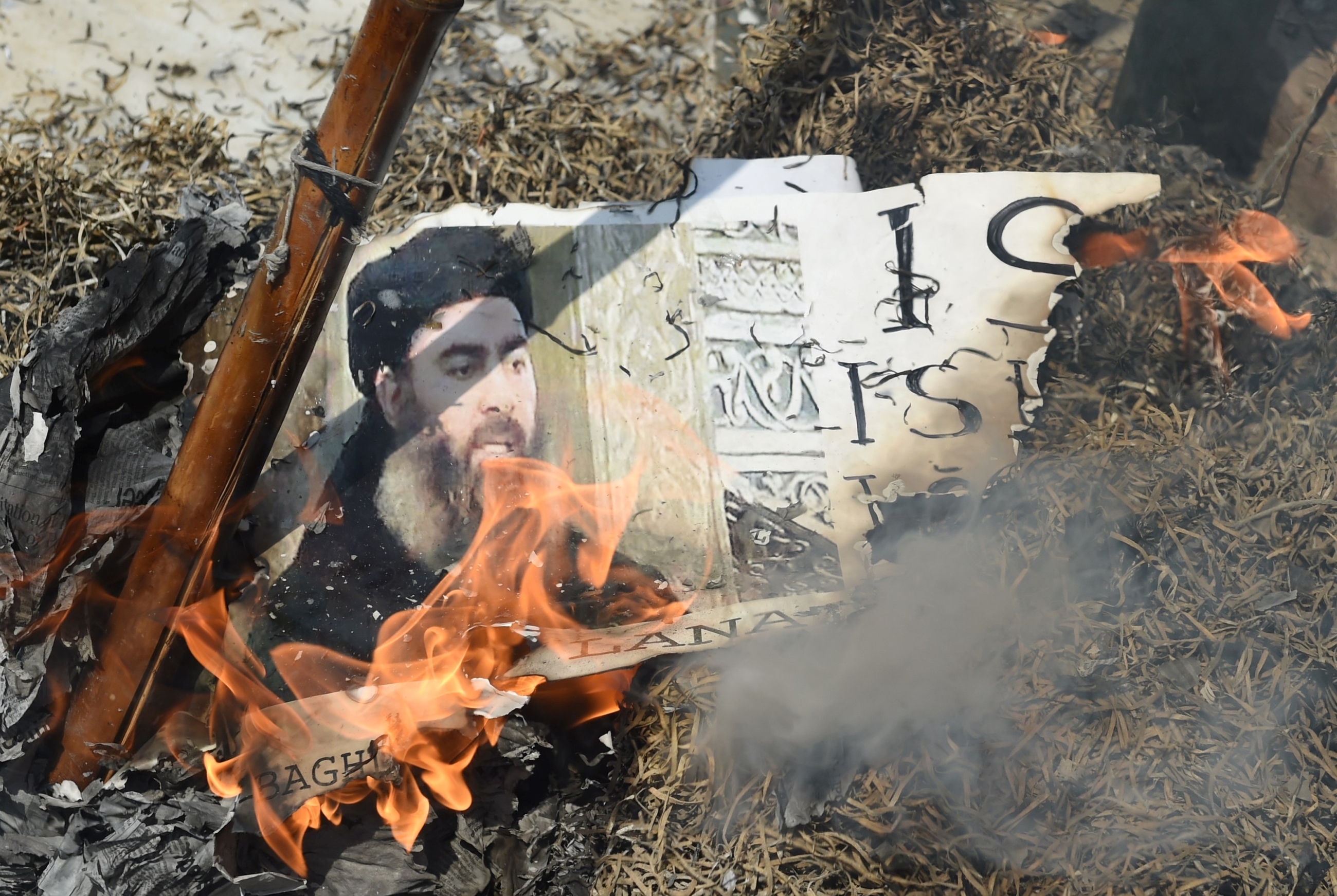
Following the death of Abu Bakr al-Baghdadi, the self-declared caliph of the Islamic State (IS) that once straddled both Iraq and Syria, three questions are being asked by media analysts and government officials alike.
First, how was al-Baghdadi caught? Second, who will replace him? Third, can the remnants of IS regroup following his death?
Incoherent ME policy
On the first question, US President Donald Trump revealed how al-Baghdadi was caught, almost to a fault, according to some former intelligence officials, as Trump revealed technical details of American intelligence tradecraft.
Islamic State, despite the death of its leader, will benefit from an incoherent Middle East policy under President Trump
While answering the question of al-Baghdadi’s replacement is mere speculation at this point, the third can be answered, since it is related to Trump’s decision to withdraw US forces from Syria. IS can endure al-Baghdadi's death since it thrived in the chaos in Syria, as it did in 2011 when the Syrian civil war erupted, and that chaos is happening now, with fighting between Syrian Kurds and Turkey.
New MEE newsletter: Jerusalem Dispatch
Sign up to get the latest insights and analysis on Israel-Palestine, alongside Turkey Unpacked and other MEE newsletters
IS can also take advantage of the conditions in neighbouring Iraq as Iraqis protest weak governance there. Finally, IS, despite the death of its leader, will benefit from an incoherent Middle East policy under President Trump.
The answer to how al-Baghdadi was caught can be attributed to the role of human intelligence, as opposed to signals or satellite intelligence. A former CIA officer, Daniel Hoffman, said: “You’ve got to go out and meet sources or have liaison partners like the Kurds,” referring to the Syria Kurds, with which the Trump administration recently severed an alliance.
Indeed, a Syrian Kurdish official claimed that it had provided intelligence on al-Baghdadi’s whereabouts for the past six months, while Iraqi intelligence also took credit, stating that its interrogations yielded al-Baghdadi’s location.
Islamic State: From Iraqi insurgency to death of Baghdadi
+ Show - Hide2004-11: Following the 2003 US-led invasion of Iraq, an al-Qaeda offshoot sets up, changing its name in 2006 to the Islamic State in Iraq.
2011: The group's leader, Abu Bakr al-Baghdadi, sends operatives to Syria to set up a subsidiary of the group. Baghdadi follows in 2013, breaking with al-Qaeda and renaming his group the Islamic State in Iraq and the Levant.
2014: Its sudden success begins with the seizure of Fallujah in Iraq and Raqqa in Syria. Mosul and Tikrit follow. Baghdadi renames the group Islamic State and declares a "caliphate". Raqqa and Mosul become IS's two de-facto capitals.
US warplanes strike IS positions in northern Iraq, and Washington forms a coalition of more than 70 countries to fight the group, spearheaded on the ground in Iraq by Iraqi government forces, Iran-backed militia groups and Kurdish peshmerga fighters, and in Syria by the Kurdish-led Syrian Democratic Forces. The offensive halts IS’s momentum.
2015: Militants in Paris attack a satirical newspaper and a kosher supermarket, the bloody start to a global wave of attacks where IS claims responsibility. Fighters in Libya behead Christians and pledge allegiance to IS, followed by groups in other countries, but they stay operationally independent.
2016: The defeat against IS starts to take shape with winning offensives in Fallujah in Iraq and Manbij in Syria.
2017: IS suffers a year of catastrophic defeats, losing Mosul in Iraq, and Raqqa and Deir Ezzor in Syria.
2018: The Syrian government retakes IS enclaves in Yarmouk, south of Damascus, and on the frontier with the Israeli-occupied Golan Heights.
2019: IS fighters are defeated at their last enclave on the Euphrates in the village of Baghouz. The SDF declares the "caliphate" eliminated. In a video, Baghdadi acknowledges defeat in Baghouz while threatening "revenge" attacks.
On 27 October, US President Donald Trump announces the death of Baghdadi in a raid by US special forces soldiers in Idlib in northwestern Syria.
While it was thought that al-Baghdadi would be hiding in the anarchic border area between Iraq and Syria, he was surprisingly found in the northwestern Idlib province of Syria, held by Hayat Tahrir al-Sham (HTS), the al-Qaeda affiliate which once rivalled IS.
Who is next in line?
On the question of succession, the Washington Post revealed three potential successors. The two non-Iraqis that were mentioned include Abu Saleh al-Jazrawi, a Saudi, or Abu Othman al-Tunisi, apparently a Tunisian, as al-Baghdadi’s Iraqi aides have been mostly killed off. If so, this would reverse a practice that began in 2010.
The precursor of IS, al-Qaeda in Iraq, was led by a Jordanian, Abu Musab al-Zarqawi, who was killed in a strike on 7 June 2006.
It remains to be seen whether those who escaped the IS prisons will make a difference in an IS resurgence, or if its future leaders are organising themselves during their current incarceration
He was succeeded by Abu Ayyub al-Masri, an Egyptian bombmaker, who realised that an Iraqi should have a leadership role in Iraq’s insurgency, and promoted Abu Umar al-Baghdadi. Both were killed in 2010, allowing for Abu Bakr al-Baghdadi to become its leader.
Another name mentioned is Al-Haj Abdullah Qardash, a Turkmen from the Iraqi town of Tal Afar. If this is the case, he would most likely not have the Arab pedigree of al-Baghdadi, who claimed he was descended from the Prophet Muhammad, a spurious lineage used by IS to justify al-Baghdadi's claim to the caliphate.
If the latter is chosen as al-Baghdadi’s successor it will represent a second leader of IS who was also imprisoned in the American Camp Bucca as of 2004. Apparently, it was this prison where IS commanders came together as a nucleus that would revitalise the flagging group after 2010.
It was a second set of prisons near Baghdad that were raided by IS in 2013, freeing close to 500 captured comrades, providing a pool of commanders and foot soldiers that were essential for its offensive into Mosul almost exactly a year later.
This ultimately raises the question of what is happening in the current prisons holding IS fighters, guarded by Syria’s Kurds?
As the Turkish incursion into Syrian Kurdish-held territories have diverted resources from guarding these facilities, there have already been reports of prison breaks occurring with estimates of at least 100 prisoners having escaped.
It remains to be seen whether those who escaped the IS prisons will make a difference in an IS resurgence, or if its future leaders are organising themselves during their current incarceration.
Islamic State revival
One key question is whether or not the former Islamic State can be revived after al-Baghdadi's death?
The answer to this question depends on defining IS at this particular moment. IS began as a terrorist group, evolved into a state, and even after its defeat persists as an idea.
In terms of a state and idea, IS has suffered severe setbacks. The Islamic State’s most potent idea was resurrecting the caliphate, and its first “caliph” has died. However, IS will still pose a threat as a terrorist group under its new leader.
At its lowest point in Iraq in 2010, it was believed that the group’s numbers dwindled down to a mere 700 fighters. According to a US Department of Defense report from August, there are between 14,000 and 18,000 IS fighters. Even with the discrepancy within those estimates, the number is still much greater than the 700 fighters it had at its low point.
Prior to al-Baghdadi’s death, IS operated in rural hideouts, as it did during its low point in 2010. Despite the death of its leader IS can continue to launch terrorist attacks and guerrilla-style hit-and-run attacks. Most of its cells are autonomous and financially self-sufficient and asuch will not suffer from the decapitation of its leadership.
In this state, defeating a terrorist group that is on the run and uses guerrilla tactics is more difficult than destroying an "Islamic state" when it fielded a standing army that tried to actually hold ground and cities.
A political solution
The question should not be what is the future of the so-called Islamic State after the death of its leader, but rather what are the circumstances that led to its emergence and will IS retaliate?
IS emerged with the collapse of the Syrian state after 2011, and the decrease in governing capacity in Iraq that plagued its new government since the US invasion of 2003.
Both these problems persist today.
The strategy for ultimately defeating IS would entail a political solution to the Syrian civil war, as well as reconstruction aid to Syria and Iraq. None of those issues have been prioritised by the US or the international community.
Given this precedent, IS suffered a symbolic blow with the death of its first caliph, but it is by no means defeated. IS will most likely retaliate, most likely at a soft target in Iraq or Syria, to show the group is still relevant.
The views expressed in this article belong to the author and do not necessarily reflect the editorial policy of Middle East Eye.
This article is available in French on Middle East Eye French edition.
Middle East Eye delivers independent and unrivalled coverage and analysis of the Middle East, North Africa and beyond. To learn more about republishing this content and the associated fees, please fill out this form. More about MEE can be found here.



